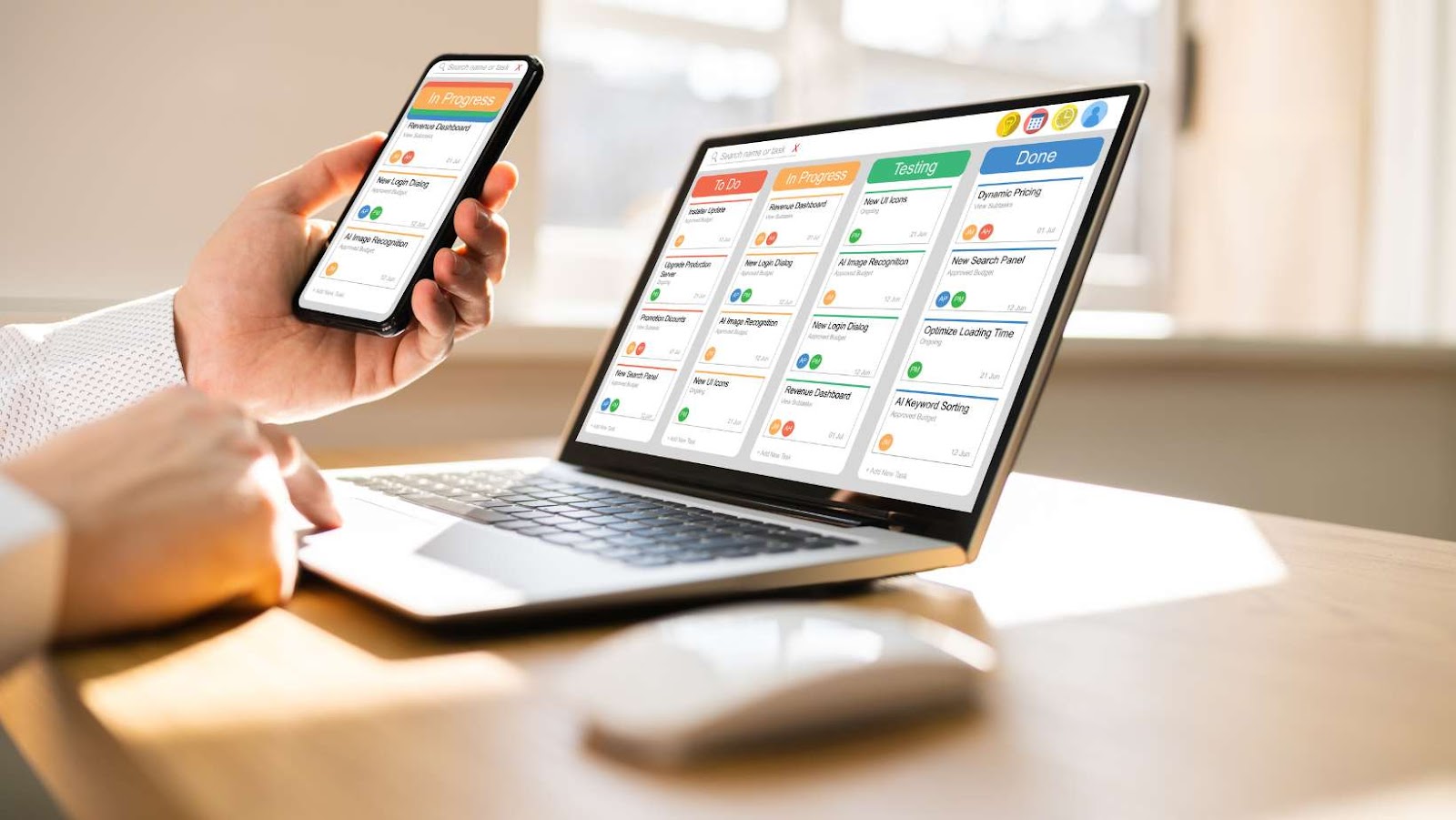E-commerce is evolving rapidly, and businesses should use cutting-edge web app development solutions to stay competitive. A well-designed e-commerce web application can enhance customer experience, streamline operations, and boost revenue.

Importance of Web Apps in E-Commerce
E-commerce businesses thrive on user engagement, convenience, and seamless shopping experiences. A web app provides an intuitive platform for customers to browse, shop, and make payments. Unlike traditional websites, web apps offer dynamic functionalities, real-time updates, and offline accessibility, ensuring a superior user experience.
Key benefits of e-commerce web apps include:
- Enhanced Performance: Faster loading times compared to conventional websites. Studies show that 53% of mobile users abandon websites that take more than 3 seconds to load. (Source: Google)
- Cross-Platform Compatibility: Accessible on desktops, smartphones, and tablets.
- Offline Functionality: You can use certain features without being connected to the internet.
- Personalized Experiences: Tailored recommendations and user-specific features.
Essential Features of E-Commerce Web Applications
1. Secure Payment Gateways
Trust is a cornerstone of e-commerce. Incorporating reliable and diverse payment options ensures a smooth checkout process. Popular payment integrations include:
- Credit/Debit cards
- Digital wallets (PayPal, Google Pay)
- Cryptocurrencies
2. Robust Search Functionality
A powerful search bar with filtering and sorting options helps users find products quickly.
- Auto-suggestions and predictive searches enhance user experience.
- Filters by price, category, and reviews save time.
3. Real-Time Inventory Management
Maintaining accurate stock levels avoids customer dissatisfaction due to unavailability.
- Integration with inventory tracking systems ensures real-time updates.
- Notifications for low-stock items can prompt timely restocking.
4. User-Friendly Interface (UI/UX Design)
For users to remain engaged, a clean, intuitive design is essential. According to WebFX, 50% of consumers say that their impression of a business depends on the company’s website design. Key considerations include:
- Simplified navigation with a clear layout.
- Attractive product displays with high-quality images.
- Mobile responsiveness to cater to smartphone users.
5. Customer Support Integration
Incorporate chatbot development services for instant assistance. AI-powered bots can handle queries, recommend products, and process returns.
Note: At App-Scoop, we specialize in e-commerce web app development that delivers exceptional user experiences and seamless functionality. As a leading app development company in Canada, we help businesses harness the power of cutting-edge technologies such as AI, machine learning, and blockchain to build scalable and secure web apps.
Let’s Build Your Dream E-Commerce App!

Technologies Powering E-Commerce Web Apps
1. Progressive Web Apps (PWAs)
A PWA combines the best features of a web app and a mobile app. They are lightweight, fast, and capable of delivering app-like experiences directly through a browser.
- Advantages: Offline usage, push notifications, and quick installation.
2. Artificial Intelligence (AI) and Machine Learning (ML)
AI-driven tools provide personalized recommendations and predictive analytics. ML algorithms analyze user behavior to enhance the shopping experience.
- Example: Suggesting products based on past purchases.
3. Blockchain Technology
Enhancing transparency and security, blockchain can be used for secure payment processing and supply chain management.
- Example: Tracking product origins for authenticity.
4. Cloud Computing
Cloud services ensure scalability and data security. Popular options include AWS, Google Cloud, and Azure.
- Benefits: Seamless performance even during high traffic and secure data storage.
Related Articles:
- Outsourcing Software Development Companies vs In-house Hiring: Which is Better?
- Why UX/UI Design is Crucial in AppDevelopment for Startups?
- Top Frameworks for Cross-Platform Mobile App Development in 2025

Steps to Develop a Web App for E-Commerce
1. Define Your Objectives
Decide who your target audience is, what your product range is, and what features you want. As a result of this clarity, the development process will be guided.
2. Choose the Right Framework
Select a technology stack that aligns with your goals. Popular frameworks include:
- Frontend: React.js, Angular
- Backend: Node.js, Django, Ruby on Rails
- Database: MySQL, MongoDB
3. Develop and Test
Hire a skilled web app developer to build a Minimum Viable Product (MVP) that validates core features and gathers user feedback. Rigorous testing ensures the app is bug-free, secure, and delivers a seamless experience across devices, setting the foundation for a successful e-commerce platform.
4. Deploy and Monitor
Once launched, monitor performance using tools like Google Analytics, and track key metrics such as user engagement and conversion rates. Gather user feedback for continuous improvements.
Trends in E-Commerce Web App Development
1. Voice Search and Smart Assistants: Voice-enabled searches are becoming a staple for online shopping. Integrating voice commands can simplify navigation and enhance accessibility for users.
2. Augmented Reality (AR): AR solutions allow customers to visualize products in real-time. For example, trying out furniture in a virtual room setting enhances decision-making and boosts customer confidence in purchases.
3. Subscription Models: Offering subscription-based services increases customer retention. Web apps can manage recurring payments and personalized recommendations seamlessly, fostering long-term customer loyalty.
4. Sustainability Features: Eco-conscious customers prefer brands that adopt sustainable practices. Incorporating carbon footprint trackers or green delivery options can enhance brand image and appeal to environmentally aware shoppers.
5. Artificial Intelligence (AI): AI-driven features, such as chatbots and personalized recommendations, enhance user experience and streamline customer interactions, making e-commerce platforms smarter and more efficient.

Developing a robust e-commerce web app is vital for businesses aiming to thrive in the digital marketplace. By focusing on user-centric design, advanced technologies, and seamless functionality, you can ensure a competitive edge. Partnering with a reliable web app development company can streamline the process and deliver exceptional results.
Frequently Asked Questions
What is web app development for e-commerce?
Web app development for e-commerce refers to the creation of online platforms or applications that enable businesses to sell products and services over the internet. These platforms allow users to browse, select, and purchase items, while offering features like payment integration, customer accounts, and order management.
Why is web app development important for e-commerce businesses?
Web app development is crucial for e-commerce businesses because it provides an online presence where customers can shop conveniently. It enables businesses to reach a global audience, streamline operations, track sales, and offer a seamless shopping experience, which ultimately drives revenue growth.
What are the essential features of an e-commerce web app?
Key features of an e-commerce web app include product catalog management, shopping cart functionality, secure payment gateways, user authentication, customer profiles, order tracking, inventory management, and customer support integration (such as live chat).
How does web app development improve the customer experience in e-commerce?
Web app development enhances customer experience by providing an intuitive, user-friendly interface for shopping. Features like personalized recommendations, fast load times, easy navigation, and mobile responsiveness make it easier for customers to browse products, make purchases, and track orders, improving overall satisfaction.
What are the challenges of developing an e-commerce web app?
Challenges in e-commerce web app development include ensuring security (especially for payment data), building a responsive design that works across all devices, integrating third-party services (such as payment gateways and shipping providers), and managing a large inventory efficiently. Scalability to handle increased traffic is also a critical concern.
What technologies are used in e-commerce web app development?
Technologies used in e-commerce web app development include front-end frameworks like React, Angular, or Vue.js, and back-end technologies like Node.js, PHP, Ruby on Rails, or Python with Django. Additionally, databases like MySQL, MongoDB, or PostgreSQL are used, and APIs are integrated for payment gateways, shipping, and other third-party services.
How can e-commerce web apps help in increasing sales?
E-commerce web apps can boost sales by providing features like personalized shopping experiences, special offers, discount codes, product recommendations based on browsing history, and simplified checkout processes. They also support marketing strategies such as email campaigns, loyalty programs, and abandoned cart recovery to drive conversions.
ow do e-commerce web apps ensure secure online transactions?
E-commerce web apps ensure secure online transactions by using SSL encryption for secure data transmission, PCI DSS-compliant payment gateways for credit card transactions, two-factor authentication (2FA) for user accounts, and regular security audits to protect against vulnerabilities and fraud.
Can e-commerce web apps be integrated with other platforms?
Yes, e-commerce web apps can be integrated with various third-party platforms, such as customer relationship management (CRM) tools, marketing automation platforms, accounting software, inventory management systems, and shipping providers. These integrations help streamline operations and enhance functionality.
What are the benefits of having a mobile-responsive e-commerce web app?
Having a mobile-responsive e-commerce web app ensures that your platform is optimized for users on smartphones and tablets, providing a smooth browsing and purchasing experience. This is crucial as more customers shop via mobile devices, and a responsive design improves accessibility and conversion rates, ultimately driving higher sales.



